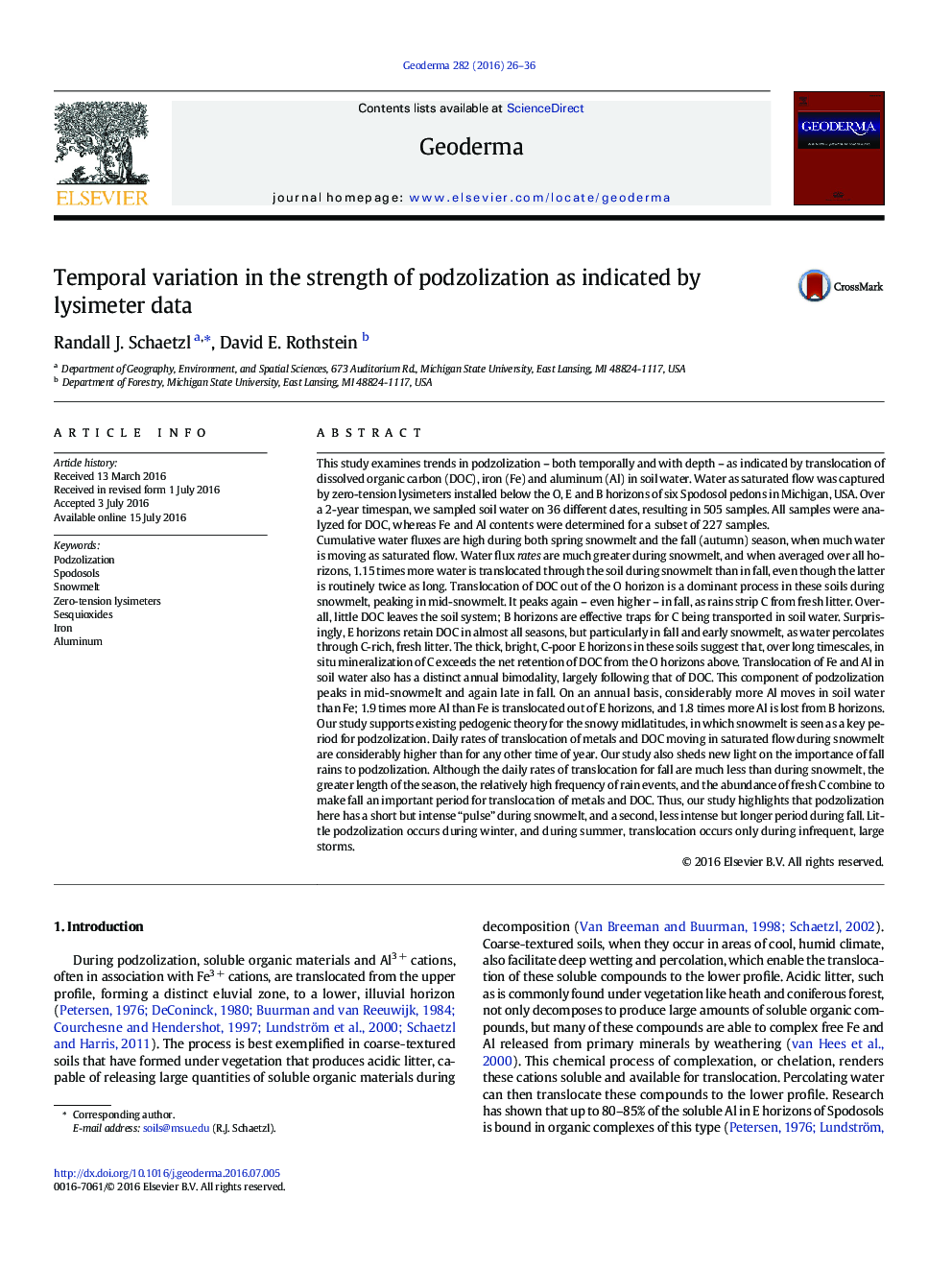| Article ID | Journal | Published Year | Pages | File Type |
|---|---|---|---|---|
| 4572862 | Geoderma | 2016 | 11 Pages |
•Lysimeter water captured for two years in six Spodosol pedons.•Water was analyzed for DOC, Fe and Al.•Podzolization occurs mainly during snowmelt and in fall.•Rates of podzolization are highest during snowmelt.•Prolonged fall rains make this an important time for podzolization as well.
This study examines trends in podzolization – both temporally and with depth – as indicated by translocation of dissolved organic carbon (DOC), iron (Fe) and aluminum (Al) in soil water. Water as saturated flow was captured by zero-tension lysimeters installed below the O, E and B horizons of six Spodosol pedons in Michigan, USA. Over a 2-year timespan, we sampled soil water on 36 different dates, resulting in 505 samples. All samples were analyzed for DOC, whereas Fe and Al contents were determined for a subset of 227 samples.Cumulative water fluxes are high during both spring snowmelt and the fall (autumn) season, when much water is moving as saturated flow. Water flux rates are much greater during snowmelt, and when averaged over all horizons, 1.15 times more water is translocated through the soil during snowmelt than in fall, even though the latter is routinely twice as long. Translocation of DOC out of the O horizon is a dominant process in these soils during snowmelt, peaking in mid-snowmelt. It peaks again – even higher – in fall, as rains strip C from fresh litter. Overall, little DOC leaves the soil system; B horizons are effective traps for C being transported in soil water. Surprisingly, E horizons retain DOC in almost all seasons, but particularly in fall and early snowmelt, as water percolates through C-rich, fresh litter. The thick, bright, C-poor E horizons in these soils suggest that, over long timescales, in situ mineralization of C exceeds the net retention of DOC from the O horizons above. Translocation of Fe and Al in soil water also has a distinct annual bimodality, largely following that of DOC. This component of podzolization peaks in mid-snowmelt and again late in fall. On an annual basis, considerably more Al moves in soil water than Fe; 1.9 times more Al than Fe is translocated out of E horizons, and 1.8 times more Al is lost from B horizons.Our study supports existing pedogenic theory for the snowy midlatitudes, in which snowmelt is seen as a key period for podzolization. Daily rates of translocation of metals and DOC moving in saturated flow during snowmelt are considerably higher than for any other time of year. Our study also sheds new light on the importance of fall rains to podzolization. Although the daily rates of translocation for fall are much less than during snowmelt, the greater length of the season, the relatively high frequency of rain events, and the abundance of fresh C combine to make fall an important period for translocation of metals and DOC. Thus, our study highlights that podzolization here has a short but intense “pulse” during snowmelt, and a second, less intense but longer period during fall. Little podzolization occurs during winter, and during summer, translocation occurs only during infrequent, large storms.
